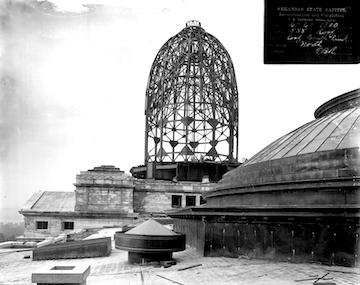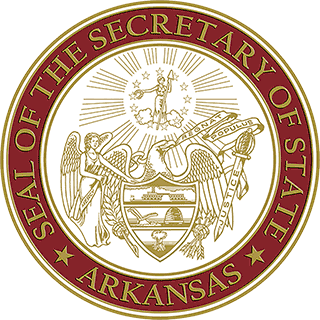State Capitol Exhibits
Open Call for Exhibit Proposals
Thank you for your interest in submitting an exhibit proposal to the Arkansas State Capitol. We welcome ideas from all sources that provide visitors with noteworthy and unique insight into Arkansas-related themes, people, places and events. Capitol staff will work with the applicant to establish the scope of the exhibit, provide oversight on research, and assist with design and installation.
Please note that the Arkansas Secretary of State’s Office maintains curatorial oversight for all projects accepted.
Click here to learn more about exhibit layout and space.
Click here to submit an exhibit proposal.
Current and Previous Exhibits
Permanent Exhibits

Building Forever: The Construction Story of the Arkansas State Capitol
Featuring historical photographs, blueprints, cartoons and newspaper articles, this exhibit chronicles the construction history of the Capitol, along with a look at 20th-century governors and their impact on state and national events. The exhibit is located in the northwest hallway of the third floor.
Call of Duty: Arkansas at War
Explore Arkansas’s role in Major U.S. Conflicts and discover stories about our state’s heroes. View memorials to Desert Storm and Pearl Harbor veterans. The exhibit and memorials are in the fourth floor east corridor.
Legislative Photo Composites
Looking for a relative who served in the Arkansas legislature? Composite photographs of each legislative session since 1911 are located on the third and fourth floor hallways. House of Representative composite photographs are on the north ends of the third and fourth floors; Senate photos are on the south ends of both upper floors. Photos are in chronological order with the newer photos located on the third floor and the older photographs on the fourth floor.
Mentors & Models
This exhibit highlights the lives of social justice and civil rights advocates Daisy and L.C. Bates, and the making of Testament, a monument on the Capitol grounds honoring the Little Rock Nine. It is located in the north foyer on the first floor of the State Capitol, overlooking the monument.
Standing for Arkansas
Learn the history behind the official symbols of Arkansas. Located in the west corridor of the fourth floor, this exhibit is fun for allages.
Through the Years By the Numbers
See how the state’s people and industries have changed from territorial days to today. A timeline of major events in Arkansas history is coupled with population s changes since the 1820s. The timeline and narrative depict landmark events since Europeans first explored the region in the 1500s, how Native American cultures shifted and the progression of agriculture and industry through today. Located in the southeast corner of the Capitol’s fourth floor.



